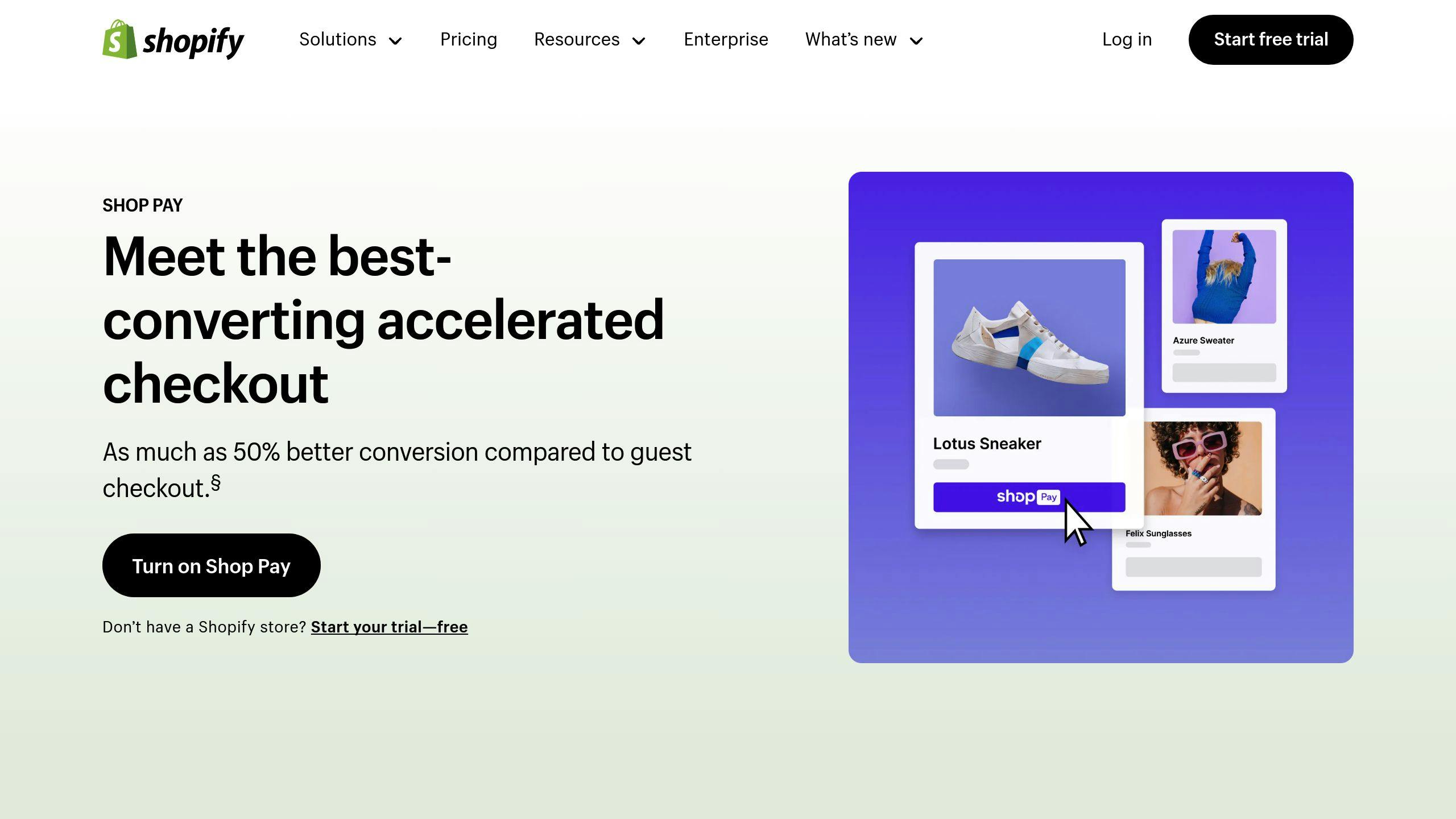By Mladen Terzic
Shopify API & Development Best Practices
18th Jun 2025
5 min read
Shopify Checkout Validation API: Key Features
Learn about the Shopify Checkout Validation API’s server- and client-side features—age checks, custom rules, express checkout support—and how they secure your checkout.

The Shopify Checkout Validation API enables merchants to create custom rules for verifying information during checkout. It supports both server-side and client-side validations, offering flexibility and security for businesses, especially Shopify Plus users. Key highlights include:
- Server-Side Validation: Enforce rules like age verification, geographic restrictions, and product limits using Shopify Functions.
- Client-Side Validation: Provide real-time feedback to customers with Checkout UI Extensions for smoother user experiences.
- Custom Rules: Set tailored conditions based on customer tags, product limits, or B2B requirements, all manageable via Shopify Admin.
- Express Checkout Compatibility: Integrates seamlessly with Shop Pay, PayPal, and other payment methods.
This API helps reduce errors, prevent fraud, and ensure compliance, making checkout processes secure and efficient. Whether you're managing age-restricted products or exclusive sales, the API provides the tools to match your business needs.
How to build Shopify cart and checkout validation functions

Features of Shopify Checkout Validation API
The Shopify Checkout Validation API offers tools to create custom validation rules for the checkout process. Here’s a breakdown of its main features and how they help merchants maintain order accuracy.
Server-Side Validation Using Shopify Functions
With Shopify Functions, server-side validation ensures checkout rules are applied consistently, no matter the client-side environment. Common use cases include verifying customer age, setting geographic restrictions, or limiting product quantities in an order.
Client-Side Validation with Checkout UI Extensions
Checkout UI Extensions handle client-side validation, giving customers instant feedback during checkout. This works smoothly with express checkout options like Shop Pay, PayPal, Google Pay, and Apple Pay [1]. These tools ensure real-time validation without interrupting the flow, and they can even support advanced scenarios, such as deeper integration with Shop Pay.
Custom Validation Rules
The API allows merchants to create tailored validation rules using tools like metafields, customer tags, and product conditions. These rules can be managed directly within Shopify Admin, offering flexibility to handle complex requirements while keeping the checkout process smooth.
Examples of custom validation include:
- Setting product-specific quantity limits
- Applying rules based on customer attributes
- Enabling tokengating for exclusive product access using digital tokens
- Configuring validation rules for B2B transactions
Proper testing ensures these rules work as intended without causing any checkout disruptions. Once familiar with these capabilities, merchants can confidently set up and manage their validations.
Steps to Use Shopify Checkout Validation
Let's break down how to implement Shopify Checkout Validation API effectively. These steps help merchants enforce custom rules that fit their business needs while ensuring a smooth shopping experience for customers.
How to Set Up Server-Side Validation
Setting up server-side validation with Shopify Functions is straightforward:
- Create a starter function: Use the Shopify CLI to get started.
- Define your rules: Update
src/run.graphqlwith your custom validation criteria and implement the logic using JavaScript or Rust. - Deploy your function: Push it to your Shopify store.
- Test thoroughly: Ensure the validation behaves as expected.
For example, you can create an age verification rule that checks a customer's birthdate to enforce minimum age requirements for restricted products [1].
Managing Validation Rules in Shopify Admin
After deploying your validation functions, you’ll need to configure them in the Shopify admin panel. Here's how:
| Step | Action | Purpose |
|---|---|---|
| Access Settings | Go to Settings > Checkout and configure rules | Set up validation rules |
| Enable Rules | Add and activate your validation rules | Make the rules active |
| Monitor | Review performance metrics | Ensure everything works smoothly |
When managing these rules, keep a few things in mind:
- Shopify offers an "Allow all customers to submit checkout" option, which ensures the checkout process continues even if a validation rule fails.
- Regular testing helps confirm that rules work without interrupting the customer experience.
- Monitoring performance metrics ensures your rules stay within Shopify’s platform limits [2].
"Server-side validation ensures that purchases meet certain criteria before checking out, enhancing the checkout process by enforcing custom rules such as age verification, B2B product limits, and location-specific order restrictions" [1].
sbb-itb-6dc743d
Advanced Tips for Checkout Validation
Using Checkout Extensibility with Shop Pay

Shop Pay offers a way for merchants to keep strong validation processes while benefiting from express checkout features. Here's a breakdown of how various validation types work within this setup:
| Validation Type | Implementation | Purpose |
|---|---|---|
| Age Verification | Server-side validation | Ensures compliance with laws |
| Membership Rules | Client-side UI extensions | Provides instant feedback |
| B2B Requirements | Custom validation functions | Manages order quantities |
While these tools expand functionality, they can also bring unique challenges. Merchants need to address these to maintain smooth operations.
Common Issues and Best Practices
To get the most out of your validation setup, consider these advanced approaches:
Improve Performance
Use Shopify Analytics to track how long validations take. If you notice delays, investigate and resolve any bottlenecks that might be slowing down complex validation processes [3].
Leverage Third-Party Services
For tasks like age verification or ID checks, specialized agencies can help integrate external services. This ensures compliance while keeping the checkout process efficient [1].
Stay Updated
Make it a habit to review and adjust validation rules regularly. Focus on:
- Changes in platform features or updates
- New legal requirements
- Performance data from your technical setup
Working with Experts for Custom Shopify Solutions
Shopify's Checkout Validation API offers powerful tools, but using them effectively often requires professional know-how. Setting up complex checkout validation rules can be tricky without the right technical skills. This is where professional development agencies come in—they simplify the process and ensure everything runs smoothly and securely.
Merchants frequently encounter technical obstacles when setting up custom validation rules. Here are some common challenges and how experts help address them:
| Challenge | Impact | Expert Solution |
|---|---|---|
| Complex API Integration | Checkout delays | Efficient coding practices |
| Security Vulnerabilities | Data risks | Secure validation methods |
| Performance Issues | Cart abandonment | Speed-focused optimization |
Codersy: Shopify Plus Development Agency

Codersy is a Shopify Plus development agency that specializes in creating advanced validation solutions tailored to meet specific business needs. Their approach combines server-side and client-side validation to ensure checkouts remain fast, reliable, and thoroughly validated.
- Technical Implementation: Codersy customizes validation rules using Shopify's API. They focus on compliance and efficiency while optimizing the implementation process.
- Performance Optimization: By balancing server-side and client-side validation, Codersy keeps checkout speeds high without sacrificing security or functionality.
- Integration Services: For unique validation needs, Codersy integrates third-party tools seamlessly. This includes compatibility with express checkout options like Shop Pay. Examples of their integration capabilities include:
- Age verification systems
- B2B quantity restrictions
- Membership status checks
- Flash sale purchase limits
Conclusion
Key Features and How They Help
The Shopify Checkout Validation API gives merchants tools to enhance both checkout security and user experience. By combining server-side validation via Shopify Functions with client-side validation through Checkout UI Extensions, businesses can build checkout processes tailored to their exact requirements.
This API supports features like age verification, B2B quantity limits, and flash sale purchase restrictions [1]. These tools help merchants meet compliance standards while keeping the checkout process smooth for customers. The result? A checkout experience that balances safety, compliance, and customer satisfaction.
Tips for Getting the Most Out of Shopify Checkout Validation
To fully benefit from the API, it’s important to configure and manage its server-side and custom rules effectively [2]. It also works seamlessly with express checkout options, adding security without slowing things down.
Start by defining clear business needs, thoroughly testing your setup, and keeping an eye on performance over time. Whether it's managing B2B operations, enforcing purchase limits, or ensuring regulatory compliance, the API supports a secure and efficient checkout.
For businesses with complex validation needs, expert help might be necessary to set things up correctly. By making the most of these tools, merchants can create a checkout process that safeguards their business while meeting customer expectations.
FAQs
What is the validate function in Shopify?
The validate function in Shopify leverages Shopify Functions to apply custom server-side rules during checkout. It’s written in Rust or JavaScript and helps enforce specific business rules, such as age checks, purchase limits, or membership requirements.
How do I create a validation in Shopify?
Here’s how you can set up a validation rule in Shopify:
- Navigate to Settings > Checkout in the Shopify Admin.
- Under Checkout Rules, add a new rule.
- Link your custom validation function and define the necessary requirements.
- Activate the rule to make it effective during checkout.
If you’re not using Shopify Plus, third-party apps can offer similar validation features, helping you customize checkout rules while keeping the process smooth for customers.
Ensure your validation rules include clear error messages and review them regularly to match your business needs. For more advanced setups, professional development agencies can assist in fine-tuning your checkout process while ensuring security and ease of use.



